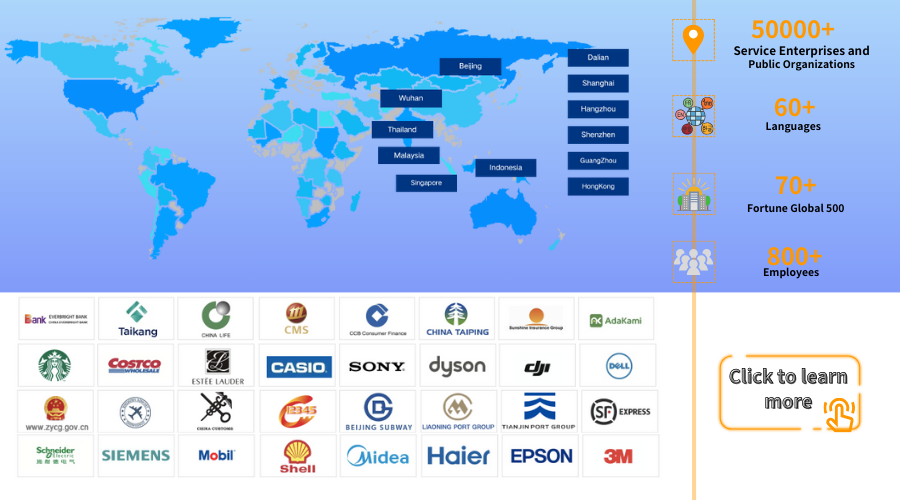Nine Tips for Exceptional Customer Service in Ticketing Systems
Article Summary:Merely implementing a ticketing system does not guarantee superior customer service. To truly stand out, businesses must refine their approach to using these systems. Below are nine ticketing system tips that can elevate your customer service to outstanding levels.
Table of contents for this article
- 1. Implement an Easy-to-Use Ticket Submission Process
- 2. Automate Where Possible, But Keep the Human Touch
- 3. Prioritize Tickets Based on Urgency and Impact
- 4. Provide Multiple Channels for Ticket Submission
- 5. Keep Your Customers Informed Throughout the Process
- 6. Leverage Knowledge Bases and FAQs
- 7. Train Your Team Regularly
- 8. Analyze and Act on Ticketing Data
- 9. Solicit and Utilize Customer Feedback
- Help your agents to help your customers.
In today's fast-paced digital economy, customer service stands as a pivotal determinant of a company's success. With the advent of technology, ticketing systems have become an indispensable tool for managing customer inquiries, complaints, and requests efficiently. However, merely implementing a ticketing system does not guarantee superior customer service. To truly stand out, businesses must refine their approach to using these systems. Below are nine ticketing system tips that can elevate your customer service to outstanding levels.
1. Implement an Easy-to-Use Ticket Submission Process
The initial step towards outstanding customer service is ensuring that your ticket submission process is as straightforward and user-friendly as possible. Customers are often already frustrated when reaching out for help; a complicated submission process can exacerbate this frustration. Simplify the process with clear instructions and ensure that the ticket submission form is accessible from multiple touchpoints on your website.
2. Automate Where Possible, But Keep the Human Touch
Automation can significantly increase the efficiency of your ticketing system by instantly acknowledging received tickets and categorizing them based on keywords or selected issues. However, it's crucial to balance automation with a human touch. Personalized responses, even if initially generated by AI, should be reviewed and possibly adjusted by human agents to ensure they address the customers' concerns empathetically.
3. Prioritize Tickets Based on Urgency and Impact
Not all tickets are created equal. Some issues may be critical and require immediate attention, while others can wait a bit longer. Implementing a system that prioritizes tickets based on their urgency and the potential impact on the customer or business can help your team resolve critical issues more efficiently, enhancing customer satisfaction.
4. Provide Multiple Channels for Ticket Submission
Customers have varied preferences for communication. While some may prefer submitting tickets through a form on your website, others might find it easier to send an email, use a chatbot, or even reach out through social media. Offering multiple channels for ticket submission ensures that you meet your customers where they are, making it easier for them to seek help when needed.
5. Keep Your Customers Informed Throughout the Process
Transparency is key to maintaining customer trust during the resolution process. Automated updates about the status of their ticket, expected resolution times, and any delays or complications can help manage customer expectations and reduce frustration. Whenever possible, let customers know who is handling their ticket and how they can get in touch for further inquiries.
6. Leverage Knowledge Bases and FAQs
A comprehensive knowledge base or frequently asked questions (FAQ) section can empower customers to find answers to common issues without submitting a ticket. This not only enhances customer satisfaction by providing instant solutions but also reduces the volume of tickets your team needs to handle, allowing them to focus on more complex inquiries.
7. Train Your Team Regularly
Outstanding customer service begins with a well-trained team. Regular training sessions on the latest best practices, updates to your ticketing system, and soft skills like empathy and communication can significantly improve the quality of service your team provides. Encourage your team to provide feedback on the ticketing process and consider their suggestions for improvements.
8. Analyze and Act on Ticketing Data
Ticketing systems generate a wealth of data that can provide insights into common customer issues, peak ticket times, resolution times, and more. Analyzing this data can help you identify trends, pinpoint areas for improvement, and make informed decisions about resource allocation, training needs, and potential product or service enhancements.
9. Solicit and Utilize Customer Feedback
Finally, soliciting feedback from customers after their ticket has been resolved can provide valuable insights into their satisfaction with the resolution process and the overall service. This feedback can help you identify strengths and areas for improvement in your ticketing process and customer service approach.
Help your agents to help your customers.
A ticketing system can be a powerful tool for providing outstanding customer service, but it requires a strategic and thoughtful approach. By implementing these nine tips, businesses can not only improve the efficiency and effectiveness of their customer service operations but also enhance customer satisfaction and loyalty, which are critical components of long-term success.
Take our Ticketing System for a spin—for free—to see how it can work for your business.
The article is original by Udesk, and when reprinted, the source must be indicated:https://www.udeskglobal.com/blog/nine-tips-for-exceptional-customer-service-in-ticketing-systems.html
Customer Ticketing SystemTicketingTicketing Software

 Customer Service& Support Blog
Customer Service& Support Blog



